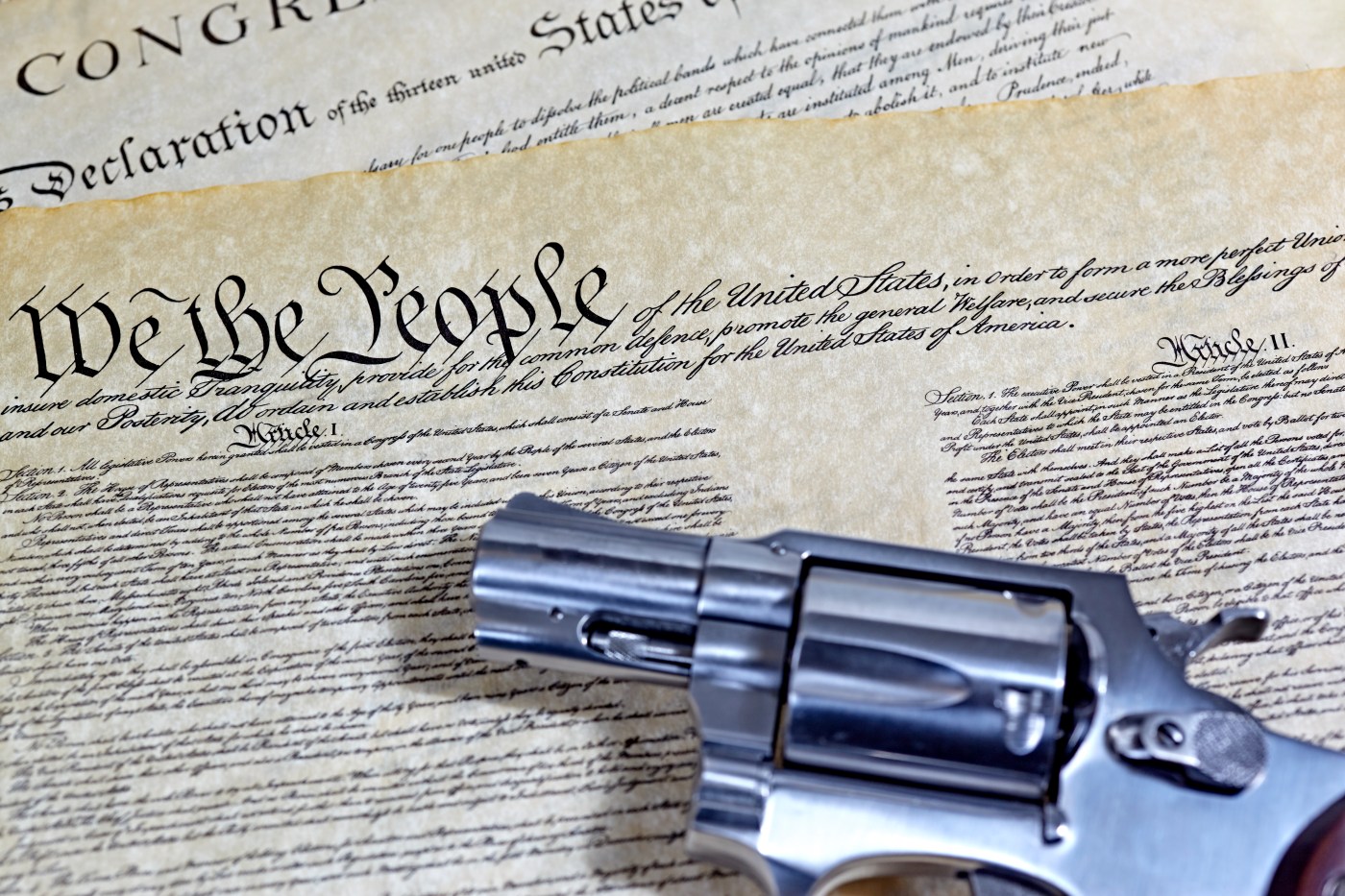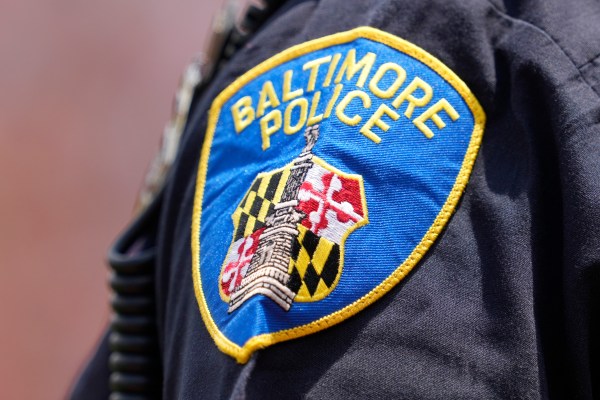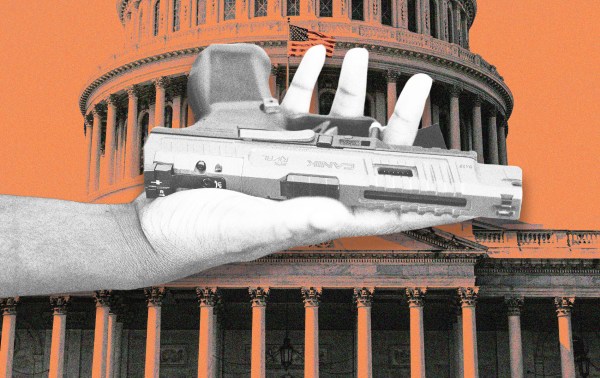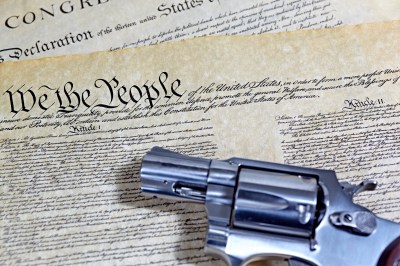At a speech to National Rifle Association members in February 2024, Donald Trump promised he’d almost immediately roll back all of the gun rules implemented over the previous four years if elected.
“Every single Biden attack on gun owners and manufacturers will be terminated my very first week back in office,” Trump told the crowd to cheers.
But Trump’s first week in office came and went without any action on guns. And while he has taken a few steps to undo parts of Biden-era gun policy since then, he has yet to take significant action on any rules imposed by the Bureau of Alcohol, Firearms, Tobacco, and Explosives (ATF) under Biden.
Among the four rules Biden implemented was the ATF’s ban on “ghost gun” kits—unserialized, unfinished gun parts sold alongside tools for self-assembly. Gun-rights activists argue the ghost gun rule gives the ATF too much power to determine what is and isn't a gun. They say it infringes on Americans' right to build their own firearms for personal use.
And now, the Supreme Court has upheld that ban. In a 7-2 ruling on March 26, the justices found there were at least some ways to enforce the ATF rule against ghost gun sales that are consistent with underlying federal law. They concluded that was enough to give the ban a green light.
“Yes, perhaps a half hour of work is required before anyone can fire a shot,” Justice Neil Gorsuch wrote for the majority in Bondi v. VanDerStok. “But even as sold, the kit comes with all necessary components, and its intended function as instrument of combat is obvious. Really, the kit’s name says it all: ‘Buy Build Shoot.'”
That the Trump administration decided not to intervene demonstrates how it views the issue as a low priority. It’s not that nothing could be done, even though the Supreme Court heard oral arguments for the case back in October, before the presidential election. The administration could have asked the Supreme Court to moot the case. It also could have submitted its own ATF rule change before going to the Supreme Court, which would have upped the odds of success.
But it didn’t do any of that, which fits with how it has approached gun policy to this point.
President Trump didn’t mention gun policy once in his marathon speech to Congress in early March. It was left out of the White House’s literal priority list. He didn’t issue any gun executive orders in his Day 1 blitz, and the one he has issued since is a plan to make a plan.
This mirrors the campaign where he left guns out of his record-long RNC acceptance speech and deleted gun policy promises from the party platform.
Still, there has been good news for gun-rights activists.
The Trump administration eliminated the White House Office of Gun Violence Prevention, which had been created by former President Biden. It deleted the 2024 surgeon general proclamation calling for new gun restrictions. And it reopened sales of military surplus firearms, like the collectible M1 Garand and 1911 pistol, through the Civilian Marksmanship Program.
It also issued a new rule that looks to establish a new process for restoring gun rights to at least some former convicts. And it announced a civil rights investigation into Los Angeles County’s long processing times and high fees for concealed carry permits.
Perhaps most prominently, the Trump administration fired the ATF’s chief counsel a few weeks back and recently hired Robert Leider, a Second Amendment scholar and gun-rights advocate, to replace her. In December, Leider—who is also a law professor at George Mason University—advocated for using the ATF’s powers to enact pro-gun reforms. In addition to undoing other rules that haven’t yet been considered by the Supreme Court, the ATF could still try to reverse or limit much of what's in the ghost gun rule.
There’s reason to think the Trump administration could eventually follow through on much of what the gun-rights activists want, even if it's not one of their top priorities. Of course, that also means they’re likely to lose out whenever their wants conflict with something higher up the list.
The risk of Trump turning on gun-rights activists remains as well. But that’s mostly confined to what he might do in the aftermath of a major mass shooting. He endorsed red-flag laws after the 2018 school shooting in Parkland, Florida, and reportedly considered backing an assault weapons ban in the wake of the El Paso Walmart shooting. He also went through with a ban on bump stocks—which help semiautomatic rifles fire more rapidly—in the wake of the 2017 mass shooting in Las Vegas, but the Supreme Court struck that down last year, with Trump’s own Supreme Court appointees joining the majority.
In the meantime, it’s likely gun rights advocates' priorities will take a back seat to everything else the administration is trying to do. That will probably still result in some movement they’ll be happy with. But, as the Supreme Court ruling in Bondi v. VanDerStok demonstrates, it may not always end that way.







Please note that we at The Dispatch hold ourselves, our work, and our commenters to a higher standard than other places on the internet. We welcome comments that foster genuine debate or discussion—including comments critical of us or our work—but responses that include ad hominem attacks on fellow Dispatch members or are intended to stoke fear and anger may be moderated.
With your membership, you only have the ability to comment on The Morning Dispatch articles. Consider upgrading to join the conversation everywhere.